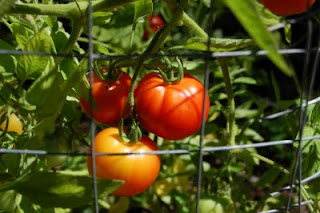The winter has started to give hints of its approach here in the redwoods of Northern California. There have been rain clouds on the horizon and evenings get cool before dinner is done. In the garden, tomatoes are ripening in the low sun and wait to be devoured off the vine. Wine on the deck in the sultry evening is giving way to red wines that warm the soul as the fog rolls in. And there is the ubiquitous humungous zucchini.
For that last hurrah of summer, I have a delicious and unusual white to recommend and try to describe. It is from the Drylands winery, a "Marlborough Winery of Nobilo Wine Group", imported from New Zealand. Marlborough is an area of New Zealand that is known for the Wairau River and plains dominated by rich, silty soils and river beds.
The Sauvignon Blanc is remarkable for the fresh herbal and citrus flavors. The nose alone wakes up the senses. And the taste is not like any other SB that I have tasted. It is not too sweet and has the lightness of a typical Blanc, but the distinct flavor brings more to the palate. It has a lemony brightness and tingle to it, reminiscent of a sparkling wine.
I tried it with fish off the barby, polenta and grilled vegetables with a red pepper sauce, brilliantly executed by my culinarily-gifted son. And I think it could hold up with other dishes, expecially when they are complimentary to citrus, such as lamb, pork, or seafood salads. Why not pair calamari on a bed of greens and a light parmesan/garlic/olive oil dressed pasta?
This is a true winner of a white. Drylands also produces a Pinot Noir and a Dry Riesling. You can be sure these are on my list of wines to try.








 Rule 2 is to bring something that tastes good and is safe to eat being lukewarm or cool in temperature. Sitting out on a common table it will lose some of the warmth over time. One of my favorite apres-tennis potlucks featured a huge Chinese Chicken Salad, with that delicious syrupy dressing and the peanuts to be tossed in when we were ready to eat. The chicken
Rule 2 is to bring something that tastes good and is safe to eat being lukewarm or cool in temperature. Sitting out on a common table it will lose some of the warmth over time. One of my favorite apres-tennis potlucks featured a huge Chinese Chicken Salad, with that delicious syrupy dressing and the peanuts to be tossed in when we were ready to eat. The chicken 